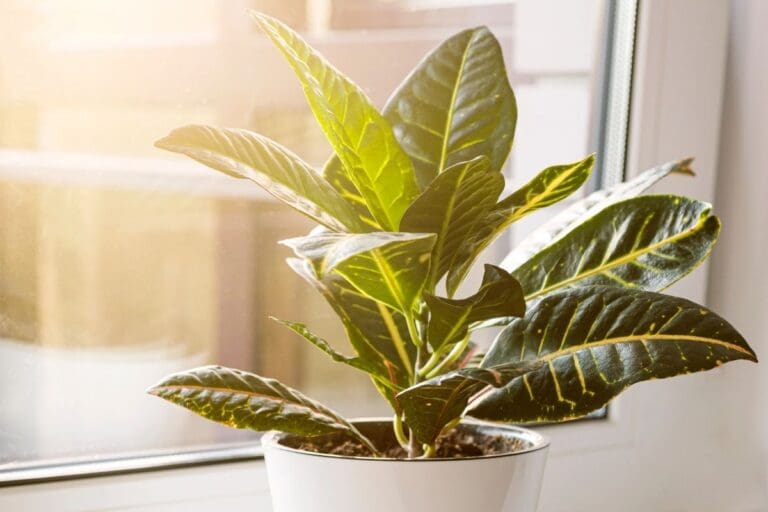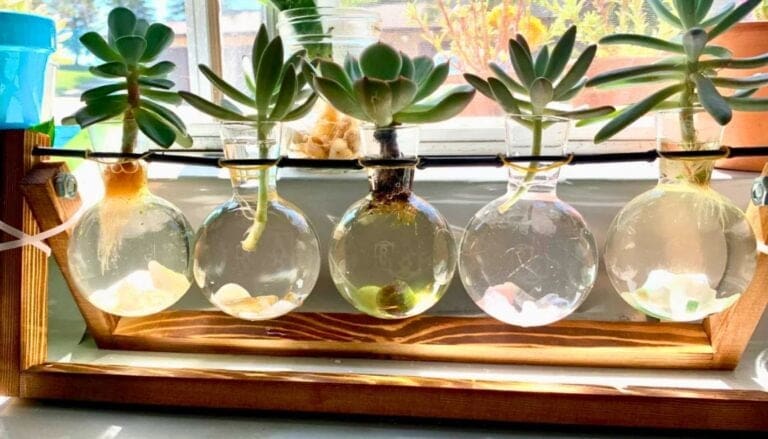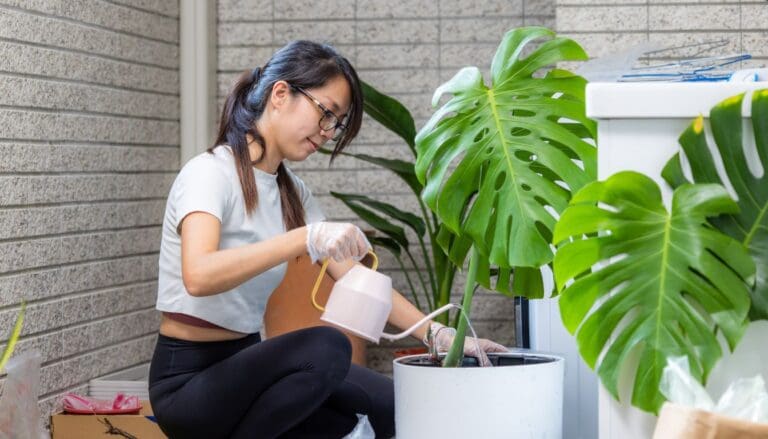7 Easy Tips to Stop Mold & Fungus on Houseplants This Summer
Summer’s great for sunshine, but honestly, it can be a headache for houseplants. Mold and fungus seem to pop up overnight in the heat, making it tough to keep my plants healthy.
I really want my indoor garden to thrive, not just survive. With a few easy tricks, I’ve found I can dodge most of these annoying problems before they get out of hand.
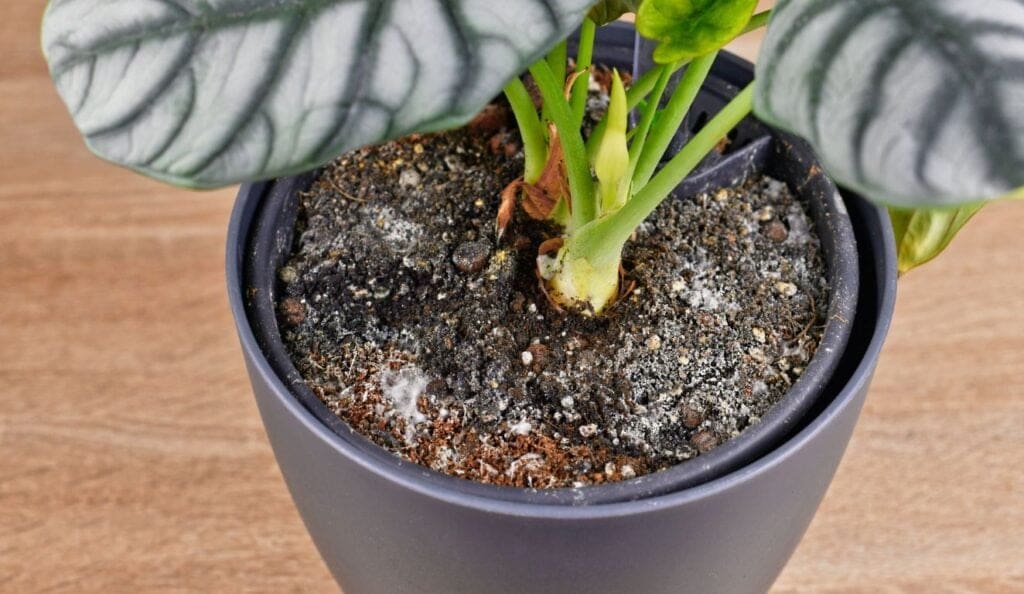
Please note: Simplify Plants is reader-supported. Some links in the post are affiliate links and I get a commission from purchases made through links in the post.
1) Increase air circulation with fans
When summer rolls around, I always think about airflow first. Good air movement makes a surprising difference in keeping mold and fungus away.
I usually set up a small fan near my plants on low speed, just enough for a gentle breeze. It helps dry off extra moisture from leaves and soil.
I’m careful not to blast the plants directly. Too much wind can dry them out or damage their leaves, which nobody wants.
If I’ve got plants scattered on different shelves or in another room, I move the fan around. That way, every plant gets some fresh air. Stale, humid air? Mold loves it.
Can’t use a fan? I’ll crack open a window for a bit. Even a little fresh air helps.
I keep an eye out for signs of mold. If I spot any, I boost airflow right away. It’s usually enough to turn things around.
2) Use neem oil spray weekly
I’m a big fan of neem oil spray for my houseplants. Using it every week helps keep mold and fungus at bay, and it’s natural—made from neem tree seeds.
I mix a little neem oil with water and spray the leaves, getting both sides. Early morning seems best for this, at least in my experience.
Neem oil keeps leaves clean and less tempting for pests. I always shake the spray bottle first—otherwise it separates.
If I notice white mold or fuzzy spots, I’ll target those areas. I let the leaves dry before putting the plants back in their spot.
Some plants are sensitive, so I always test a small patch first. If there’s no weird reaction after a day or two, I go ahead and spray the rest.
Consistency matters. I have to remind myself to do it weekly, so I set a calendar alert. That way, my plants stay happier all summer.
It’s better if the leaves aren’t already wet from watering—neem oil works best on dry surfaces.
If mold pops up again, I just spray sooner. It really helps stop things from getting worse.
Honestly, neem oil is quick to use and makes a big difference with very little hassle.
3) Avoid overwatering plants

I used to overwater my houseplants all the time. It’s easy to think they’re thirsty, but most plants actually like their soil to dry out between drinks.
Too much moisture? That’s when fungus and mold show up fast. Wet soil is basically an open invitation for trouble. I check the soil by poking my finger in up to the first knuckle—if it’s still damp, I wait.
Pots with drain holes are a must. They let extra water escape, so the roots don’t sit in soggy soil. I also dump out any water that collects in the saucer.
I’ve found my plants do better with less frequent, deeper watering. The roots grow stronger, and mold doesn’t stand a chance. Every plant’s different, so I always check what each one prefers.
Watering in the morning helps too—the soil dries out during the day. This one step alone cuts down on mold and fungus. If leaves turn yellow or get mushy, that’s a sign I’m overdoing it.
Being careful with water just makes life easier for me and my plants.
4) Place plants in direct sunlight

I do my best to give my houseplants enough sunlight. Sunlight is great for drying out wet spots and making it harder for mold or fungus to settle in.
When I move my plants to a sunny window, they perk up. Mold and fungus just don’t like too much light, so it’s harder for them to spread. I try to get my plants at least a few hours of bright light every day.
Some plants can’t handle direct sun, though, so I check what each one prefers. If a plant likes shade, I’ll put it near a bright spot but not right in the sun. Too much sun can burn sensitive leaves, so it’s a bit of a balancing act.
I also clean my windows to let in more light. Dusty windows block sunlight, which gives mold a better chance.
If mold keeps coming back, I’ll try moving the plant to a sunnier spot. Rotating plants helps them get even light and avoids shady, damp corners. With the right sunlight, my plants seem way happier all summer.
5) Use sterile potting soil
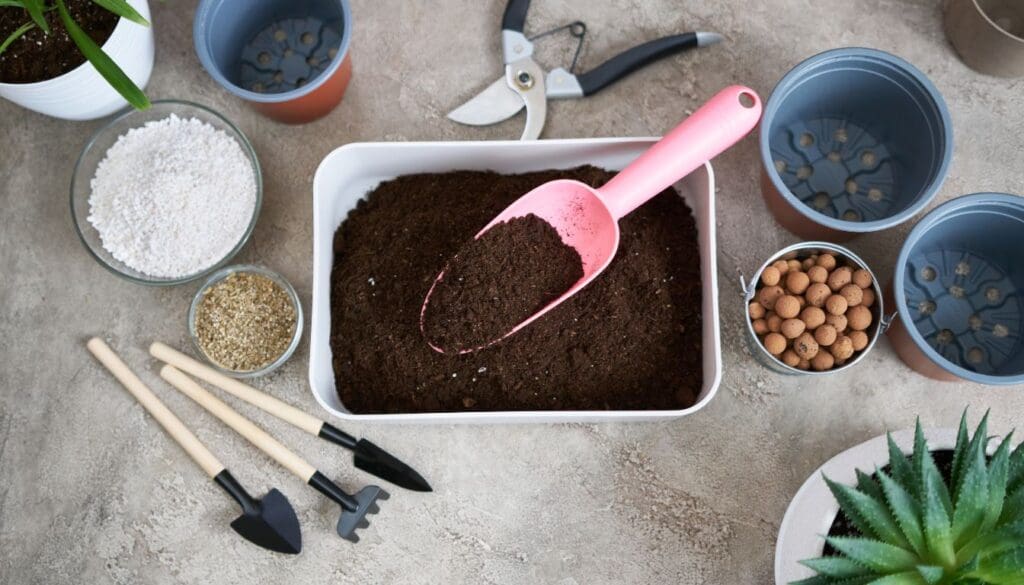
Whenever I repot, I go for sterile potting soil. Regular garden soil can hide mold spores, bugs, or fungus—even if it looks fine.
Sterile potting soil is made to be clean and pest-free. It gives my plants a healthier start and lowers the risk of mold or fungus popping up. I stick to soil from reliable stores so I know it’s not contaminated.
If I use soil from outside or reuse old potting mix, I might bring in problems. Even if it looks clean, there could be tiny spores hiding in there.
Sometimes I bake soil at home—low heat, 30 minutes or so—just to be sure it’s sterile. It’s a bit of work, but it kills off most pests and germs.
Keeping things clean is huge for plant health. After handling soil, I wash my hands and tools so I’m not spreading spores around.
If I spot white, fuzzy patches on the soil, I scoop them off right away. Then I decide if I need to repot with a fresh, clean mix.
Starting with clean soil just gives my plants the best shot at staying mold-free all summer.
6) Remove infected leaves immediately
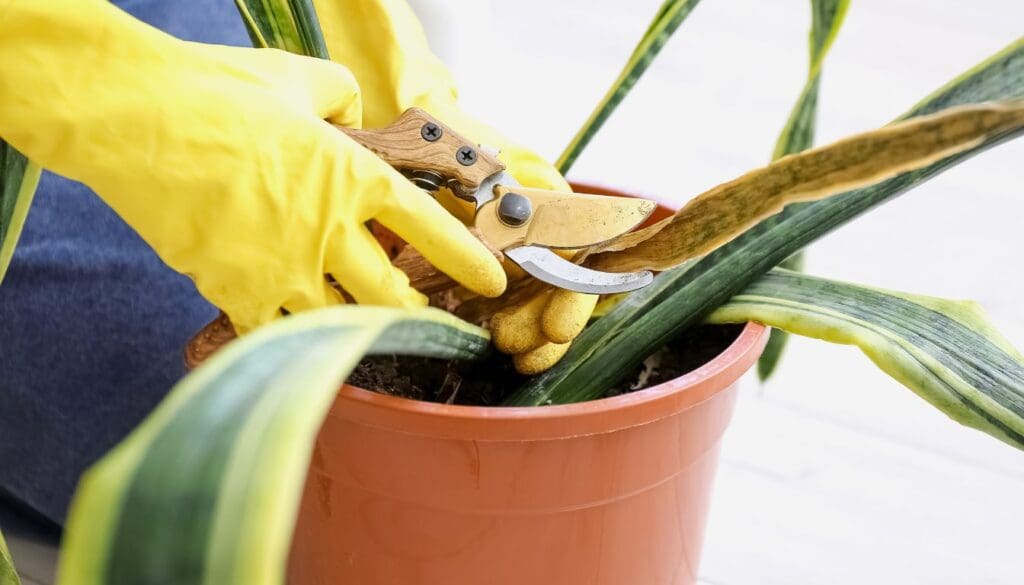
I check my houseplants for spotted or fuzzy leaves regularly. If I see any, I snip them off right away so mold and fungus don’t spread.
Using clean scissors or pruning shears is a must. I wipe the blades with rubbing alcohol to keep things germ-free.
I always toss the infected leaves in the trash—never the compost. Fungus will just keep growing there.
Removing sick leaves doesn’t hurt the plant at all. In fact, it lets the plant focus on healthy new growth. I keep a close eye for new signs of trouble after that.
Pro tip: check under the leaves, too. That’s often where mold likes to hide.
By catching bad leaves early, my houseplants have a much better shot at staying strong through the summer.
7) Apply cinnamon powder to soil surface
Whenever I see mold or fungus starting, I reach for cinnamon powder. It’s just regular kitchen cinnamon, but it’s got natural antifungal properties.
I sprinkle a thin layer on the soil surface—that’s all it takes to help stop fungus from spreading. Super easy, and it won’t hurt my plants.
I make sure it’s plain ground cinnamon, nothing fancy or mixed with sugar. After watering, I wait for the soil to dry a bit, then dust the top with cinnamon.
Cinnamon doesn’t wipe out all mold instantly, but it definitely helps over time. I see less white fuzz and my plants seem happier.
I repeat this every few weeks during the summer, just a light dusting. No need to go overboard.
It’s a simple step that fits right into my regular plant care. Cinnamon is safe for most indoor plants and doesn’t leave a strong smell behind.
This little trick keeps my houseplants looking good all summer.
How Mold and Fungus Affect Houseplants

Mold and fungus can really mess up houseplants—making them look sick or just slowing down their growth. Left alone, these problems can cause wilting, ugly leaf spots, or even kill a plant before you know it.
Signs of Mold and Fungal Growth
When I check my plants, I’m on the lookout for white, fuzzy patches, black spots, or powdery mildew on the leaves and soil. Sometimes, leaves get yellow or brown edges, and stems might turn soft or mushy.
Here’s what I watch for:
- White or gray fuzzy spots on soil or leaves
- Musty smell near the plant’s base
- Sticky residue showing up out of nowhere
- Drooping or wilting leaves even when watered
- Mushroom-like growths in the pot
If I spot any of these, I know mold or fungus is trying to take over. Catching it early makes a huge difference.
Why Summer Creates Higher Risk
Summer means my house is warmer and more humid. Mold and fungus thrive in those conditions—they spread faster in heat and moisture. If I overwater or forget to air things out, the risk goes up.
Some things I keep in mind:
- Hotter temps slow down water evaporation in pots.
- Closed rooms can trap humidity.
- Plants crowded together make it easier for diseases to spread.
Summer heat and extra moisture really speed up mold and fungus. I try to give my plants space, go easy on watering, and check for smells or new spots often.
Safe Cleaning Solutions for Summer
When summer hits, houseplants often face mold and fungus problems. I focus on solutions that are safe, simple, and proven to work.
Homemade Remedies for Plant Health
I love using homemade remedies—they’re budget-friendly and honestly, just fun to whip up.
For powdery mildew, I usually mix 1 tablespoon of baking soda, 1 teaspoon of mild soap, and 1 quart of water.
I’ll spray this on the leaves every few days, just to keep things under control.
If I’m feeling like trying something else, I go for a vinegar spray.
That’s just 2 tablespoons of apple cider vinegar mixed into a quart of water.
I always test it on a single leaf first, though—some plants can be a bit touchy.
Neem oil is another favorite of mine.
A few drops mixed with water, then misted on the leaves, and it keeps both fungus and pests in check without any drama.
Choosing Plant-Safe Commercial Cleaners
Store-bought cleaners can work, but I’m picky—I only grab ones marked “plant-safe” or “organic.”
I usually check for sprays with ingredients like neem oil, potassium bicarbonate, or essential oils.
Here’s a quick table I put together when I’m shopping:
| Cleaner Type | Key Ingredient | Use |
|---|---|---|
| Fungicide Spray | Potassium bicarbonate | Fungal infections |
| Insecticidal Soap | Soap, fatty acids | Pests, mildew |
| Neem Oil Solution | Neem oil | General plant care |
I just never use bleach or harsh disinfectants—they’re too risky for my plants.
Reading the label is a must, honestly, or you might end up with crispy leaves.
Frequently Asked Questions
I’m always searching for new ways to protect my houseplants from mold, especially when summer heat cranks up.
Here’s a bit of what I’ve learned about using the right plants, natural fixes, and simple routines to keep my plants and home feeling fresh.
What are some houseplants that can help reduce mold in my home?
I’ve noticed that English ivy, spider plants, and Boston ferns actually help with air quality.
They soak up extra moisture, which might mean less mold around.
Plus, they’re easy to keep alive and honestly look nice just about anywhere.
Are there natural ways to eliminate mold on my plant’s soil?
Cinnamon and baking soda are my standbys.
I’ll sprinkle a bit on the soil, and it usually keeps mold from spreading.
Letting the soil dry out between waterings also makes a big difference.
Can having plants in my bathroom help prevent mold growth?
Some plants can help soak up moisture in the bathroom, which is handy.
I stick with spider plants or peace lilies there.
They won’t solve everything, but they do help a bit.
I just make sure to crack a window for airflow.
How do I deal with white fungus in my plant’s soil?
If I see white fungus, I scoop off the top layer of old soil and swap in fresh, sterile stuff.
Sometimes I’ll spray the soil with neem oil or just wipe it gently with a damp paper towel.
After that, I try to avoid overwatering.
Could my indoor plants be contributing to mold on my walls?
If I overwater, all that extra moisture can definitely raise humidity and give mold a chance on the walls.
I try to water only when the soil feels dry to the touch.
Keeping the air moving with a fan or open window really helps too.
What should I do to protect my houseplants from mold and fungus during the hot summer months?
When summer hits, I usually run a small fan nearby just to keep the air moving. It really seems to help, especially when things get humid.
I’m careful not to let the soil stay too wet—honestly, soggy soil is just asking for trouble. My plants also get plenty of direct sunlight, which they seem to love.
Once a week, I’ll spray them down with neem oil. It’s not foolproof, but it definitely helps. Oh, and I always go for sterile potting soil—no sense inviting problems right from the start.
Recommended Garden Supplies
| Product Image | Our Recommended Gardening Supplies | Check Offers! |
|---|---|---|
Top Top
Top
Top
Top
Top
Top
Top
Top | rePotme Houseplant and Tropical Classic Potting Soil Mix | Check Offer On Amazon |
 Top
Top
Top
Top
Top
Top
Top
Top | Espoma Organic Indoor Plant Food | Check Offer On Amazon |
 Top
Top
Top
Top
Top
Top
Top
Top | GooingTop LED Grow Light 6000K Full Spectrum Clip Plant Growing Lamp | Check Offer On Amazon |
 Top
Top
Top
Top
Top
Top
Top
Top | Soil Moisture Meter | Check Offer On Amazon |
 Top
Top
Top
Top
Top
Top
Top
Top | Govee Hygrometer Thermometer, Bluetooth Enabled! | Check Offer On Amazon |
 Top
Top | LEVOIT Humidifiers for Large Room(Best For Plants) | Check Offer On Amazon |
 Top
Top
Top
Top
Top
Top
Top
Top | Upgraded DIY Automatic Drip Irrigation Kit, 15 Potted Houseplants Support | Check Offer On Amazon |
 Top
Top
Top
Top
Top
Top
Top
Top | Stainless Steel Heavy Duty Gardening Tool Set | Check Offer On Amazon |
 Top
Top
Top
Top
Top
Top
Top
Top | Bonide Insecticidal Soap | Check Offer On Amazon |
 Top
Top
Top
Top
Top
Top
Top
Top | Bonide 32 oz Spray Neem Oil for Organic Gardening | Check Offer On Amazon |
 Top
Top
Top
Top
Top
Top
Top
Top | Garden Safe Fungicide | Check Offer On Amazon |


